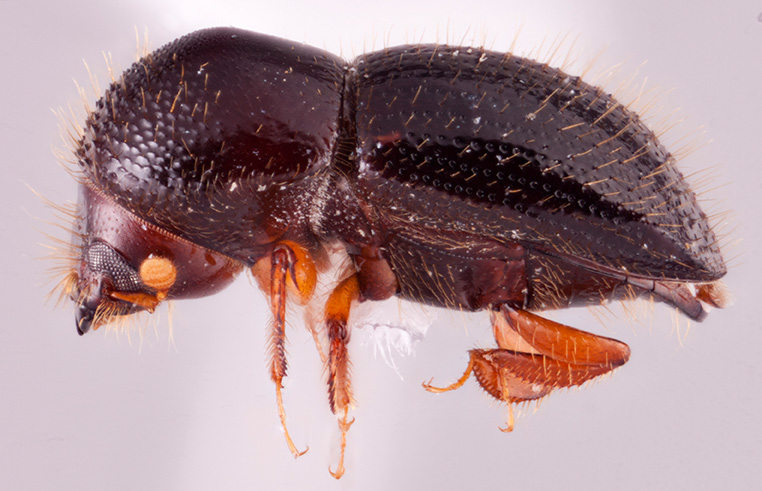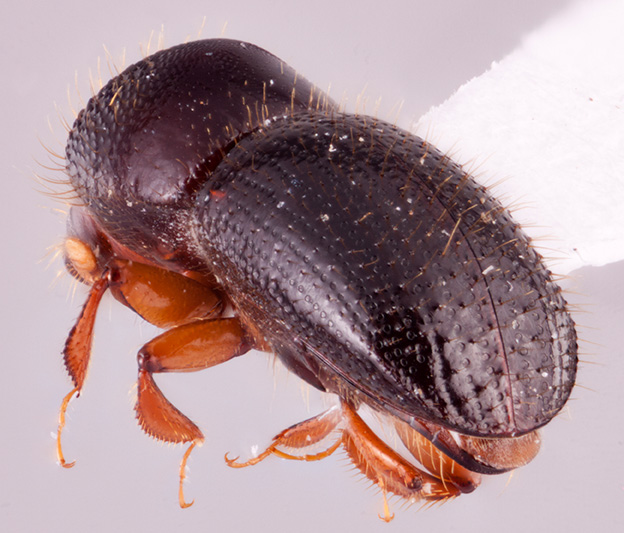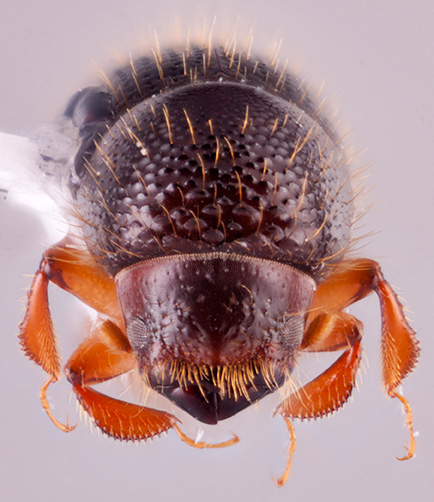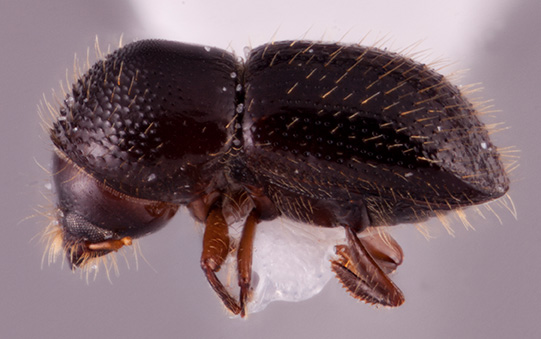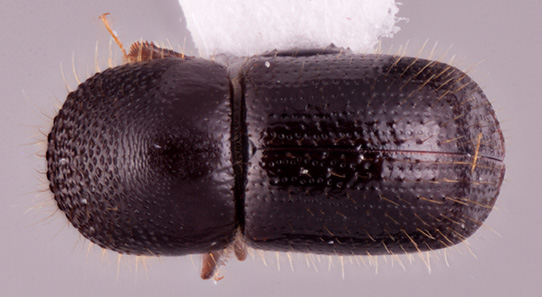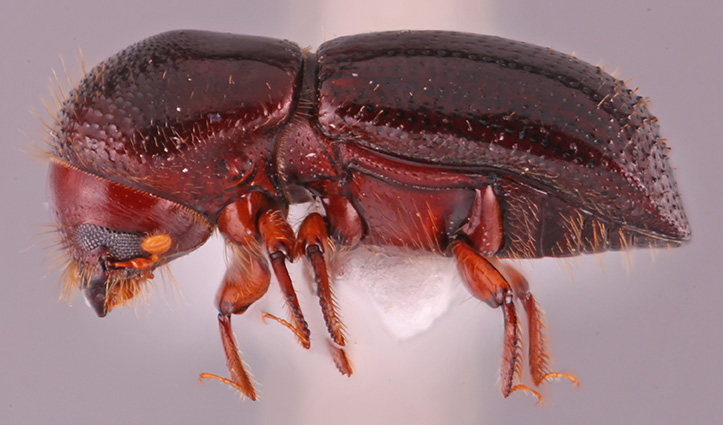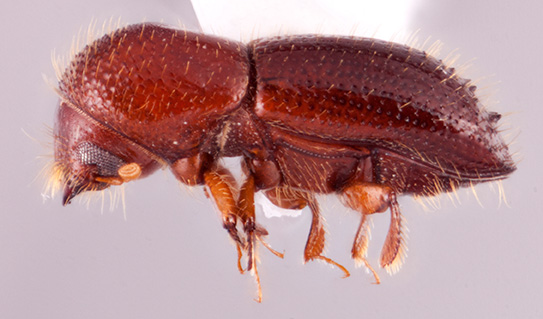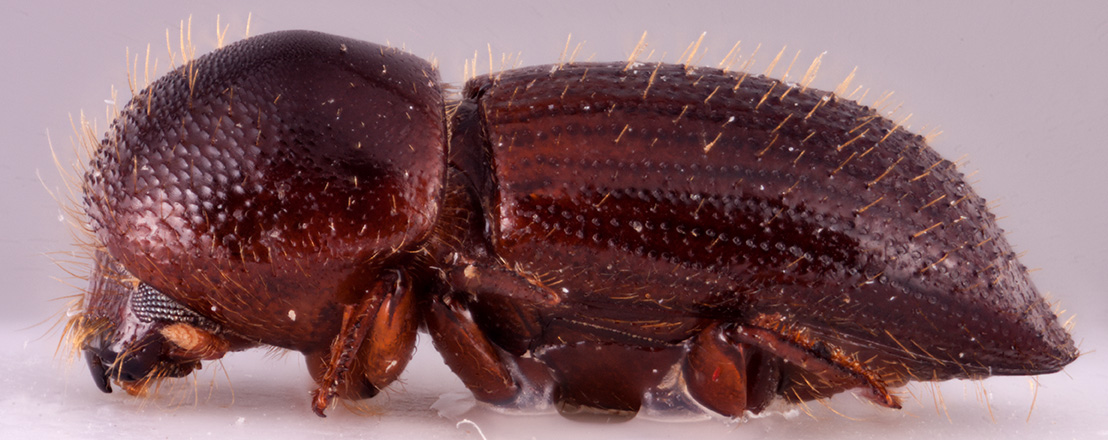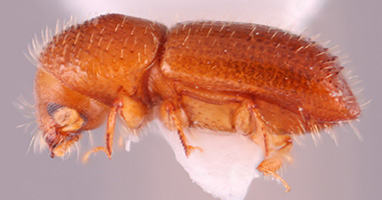Euwallacea
|
Euwallacea interjectus; R.K. Osborn |
|
Euwallacea interjectus; R.K. Osborn |
|
Euwallacea interjectus; R.K. Osborn |
|
Euwallacea interjectus; R.K. Osborn |
|
Euwallacea fornicatus; S.M. Smith |
|
Euwallacea fornicatus S.M. Smith |
|
Euwallacea luctuosus; R.K. Osborn |
|
Euwallacea sibsagaricus; S.M. Smith |
|
Euwallacea similis; R.K. Osborn |
|
Euwallacea gravelyi; R.K. Osborn |
|
Euwallacea minutus; S.M. Smith |
Taxonomy
Euwallacea Hopkins, 1915a: 54.
Synonyms
Wallacellus Hulcr and Cognato, 2010a: 27. Storer et al. 2015: 395.
Diagnosis
1.80−5.50 mm long, 2.08−3.60 times as long as wide. Euwallacea is distinguished by a combination of homoplastic characters which include the pronotumpronotum:
the dorsal surface of the thorax
typically tall with inflatedinflated:
blown up; distended
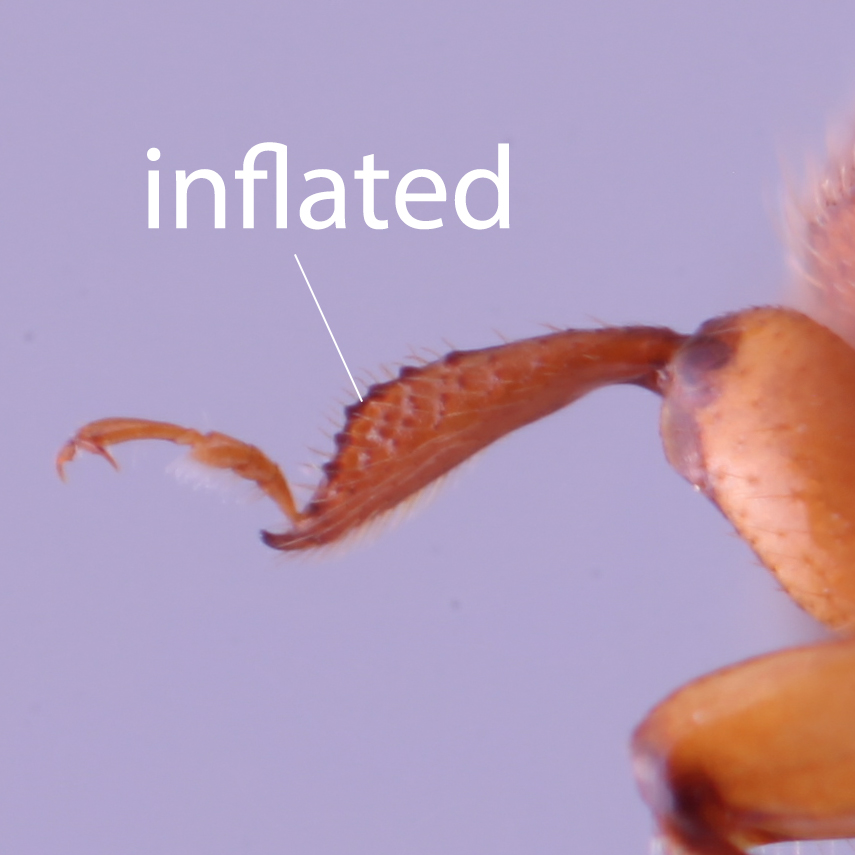 anterolateralanterolateral:
anterolateralanterolateral:
relating to the anterior and lateral parts of the side part/portion corners, appearing subquadratesubquadrate:
corners, appearing subquadratesubquadrate:
almost quadrate, with oblique corners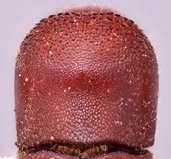 to quadratequadrate:
to quadratequadrate:
square-like in shape
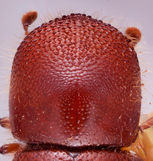 in dorsaldorsal:
in dorsaldorsal:
of or relating to the upper surface; opposite of ventral
 profile (types 3, 4, and 8), less commonly with rounded anterioranterior:
profile (types 3, 4, and 8), less commonly with rounded anterioranterior:
the front or forward; opposite of posterior margin, (types 2 and 7); anterioranterior:
margin, (types 2 and 7); anterioranterior:
the front or forward; opposite of posterior margin of pronotumpronotum:
margin of pronotumpronotum:
the dorsal surface of the thorax
unarmed; pronotalpronotal:
pertaining to the pronotum
discdisc:
the flat central upper surface of any body part (e.g. pronotum and elytra) alutaceousalutaceous:
alutaceousalutaceous:
engraved fine reticulation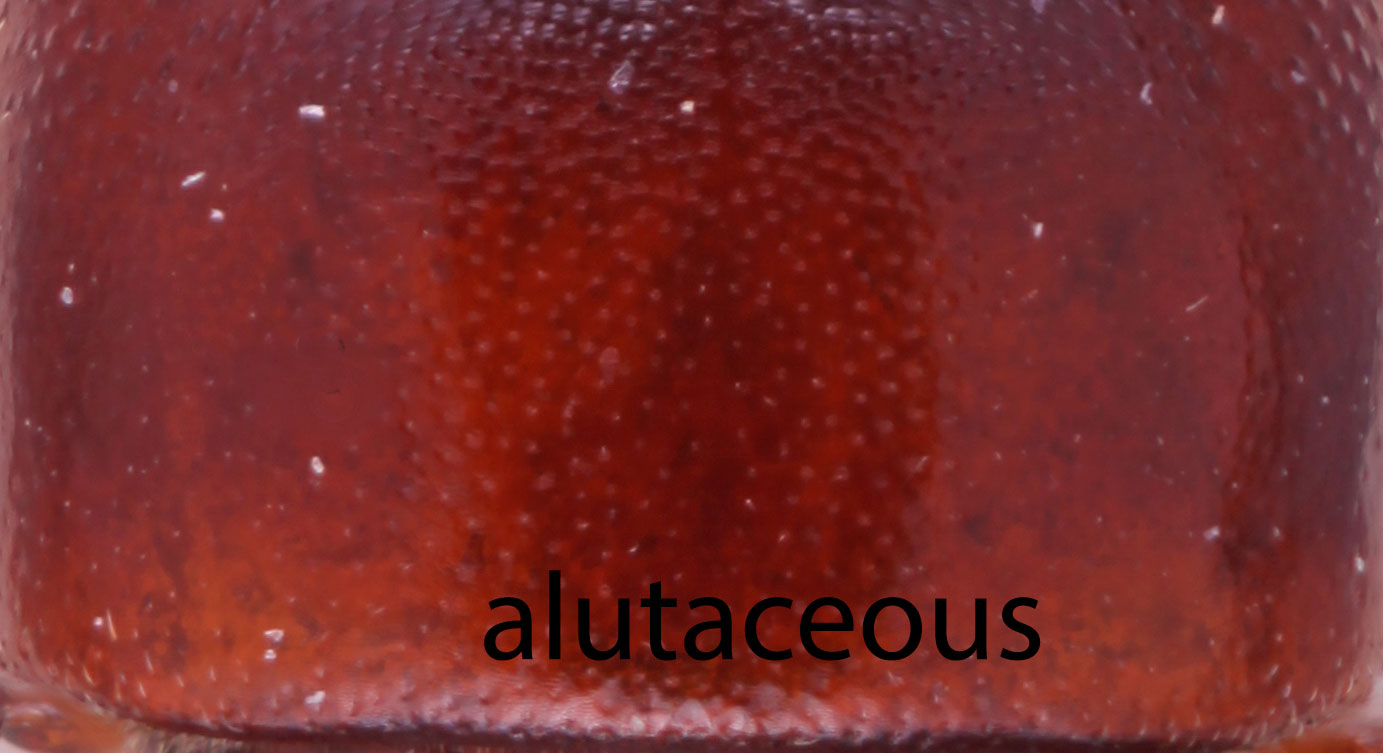 ; posterolateralposterolateral:
; posterolateralposterolateral:
relating to end of the side part/portion
 margin of declivitydeclivity:
margin of declivitydeclivity:
downward slope of either the pronotum or elytra
 with prominent costacosta:
with prominent costacosta:
elevated ridge that is rounded at its crest, not necessarily with sharp appearance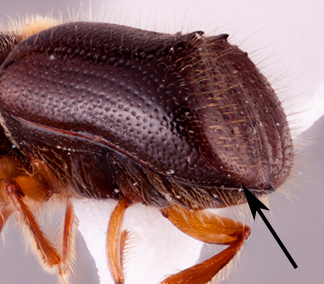 or carinacarina:
or carinacarina:
an elevated ridge or keel, not necessarily high or acute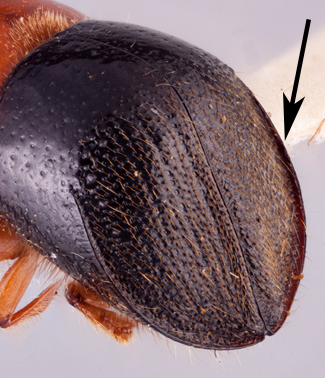 ; elytralelytral:
; elytralelytral:
pertaining to the elytra
discaldiscal:
pertaining to the disc of either the pronotum or elytra
interstrial punctures seriateseriate:
arranged or occurring in rows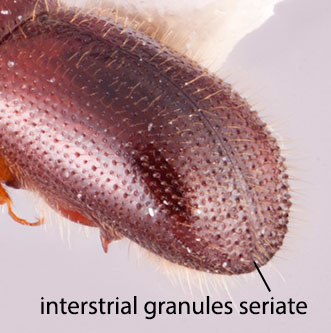 ; elytralelytral:
; elytralelytral:
pertaining to the elytra
declivitydeclivity:
downward slope of either the pronotum or elytra
 typically with very sparse setae; and antennalantennal:
typically with very sparse setae; and antennalantennal:
pertaining to the antennae
club obliquely truncateobliquely truncate:
nearly truncate but rounded not flat in lateral view
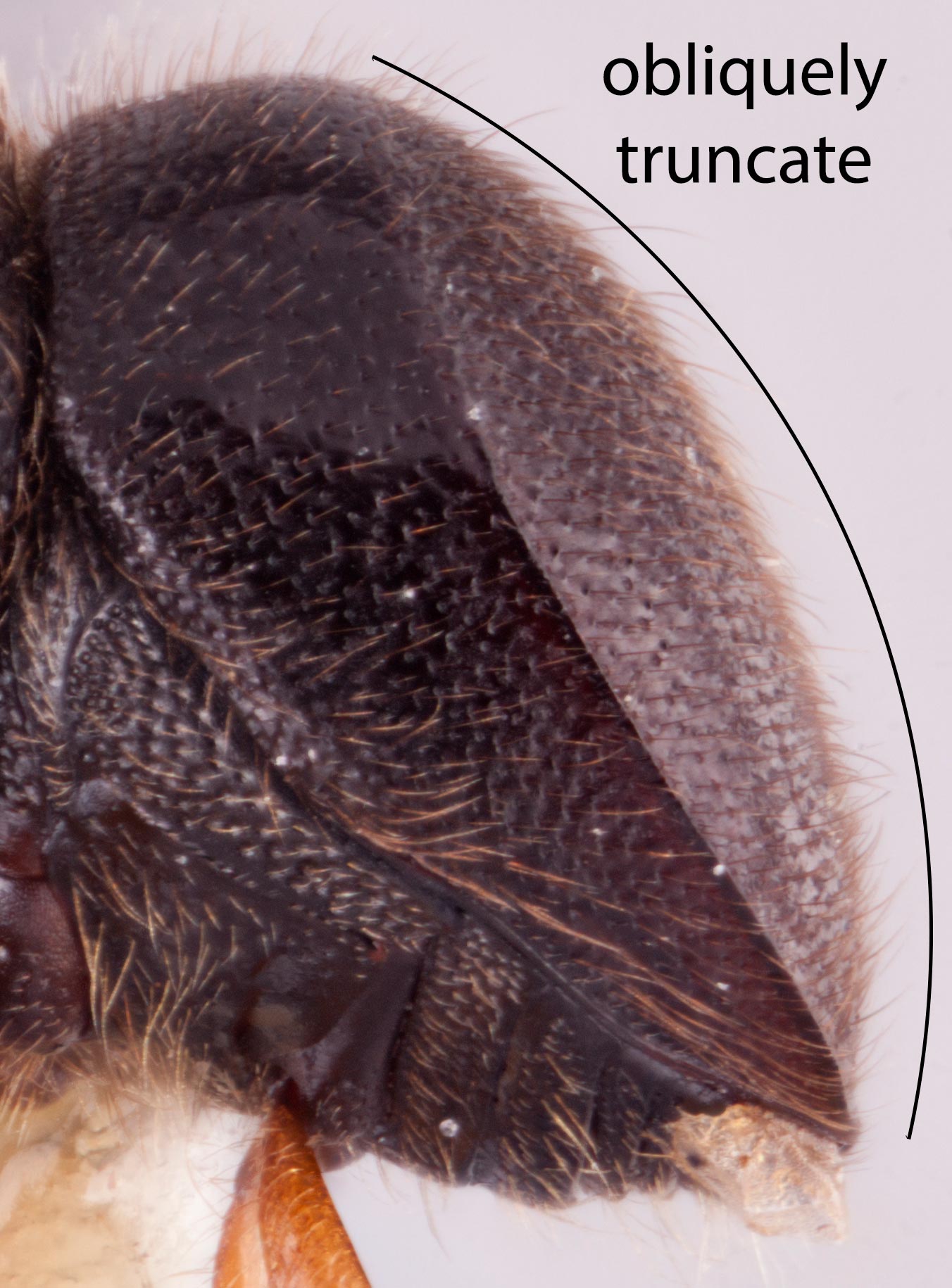 (type 2) or flattened (type 3), circular or taller than wide. In addition the scutellumscutellum:
(type 2) or flattened (type 3), circular or taller than wide. In addition the scutellumscutellum:
a shield-like sclerotized plate located at the midpoint of the elytral base
flush with elytraelytron:
the two sclerotized forewings of beetles that protect and cover the flight wings
and flat, mycangial tufts absent, laterallateral:
pertaining to the side
 margin of pronotumpronotum:
margin of pronotumpronotum:
the dorsal surface of the thorax
obliquely costate, and procoxae contiguous.
May be confused with
Terminalinus, Planiculus, and Xylosandrus
Distribution
Found throughout tropical South Asia and Oceania, rare in temperate East Asia. Multiple species near E. fornicatus introduced to North America (Gomez et al. 2018).
Gallery system
This consists of branched tunnels, either in one horizontal plane or extending into three dimensions, and penetrating deeply into the wood. Brood chambers are absent. In small diameter stems, the galleries may be longitudinal.
Remarks
Euwallacea is arguably one of the most challenging Xyleborini genera, as it contains a number of species that are clearly defined with molecular data but for which few diagnostic morphological characters exist.

